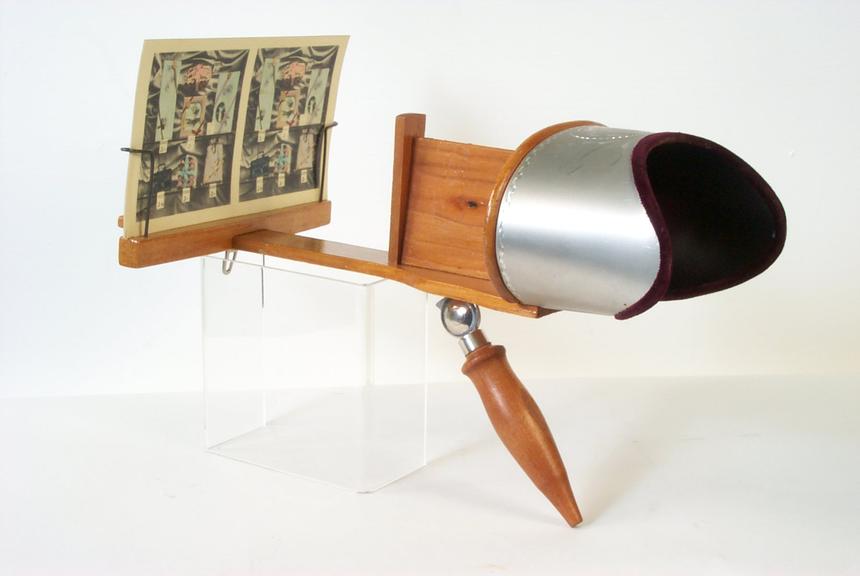

Holmes-type stereoscope
- PART OF:
- The Kodak Museum Collection
- Made:
- circa 1905
- maker:
- Underwood & Underwood

Holmes-type stereo viewer (patents 1902, 1903, 1904). 'The Mercury Stereoscope'. Aluminium lens mount and chased aluminium hood, velvet edged. In heavy carton with 63 dollotype colour printed stereo cards of chocolate box designs, priced. With broken leather strap and carrying handle. Underwood and Underwood.
Holmes-type Stereoscope with traveler's sample card featuring chocolate box design, made by Underwood and Underwood, c. 1905.
A Stereoscope is an optical instrument that presents two slightly differing pictures, one to each eye, to give the effect of depth. One of the most popular and long-lived forms of stereoscope, this was invented by the American author Oliver Wendell Holmes (1809-1894) in 1861. Holmes, dissatisfied with the traditional Brewster box-form stereoscope, created a new, light-weight and cheap design which remained in production, almost unchanged, until 1939.
Details
- Category:
- Photographic Technology
- Collection:
- Kodak Collection
- Object Number:
- 1990-5036/3755
- Materials:
- aluminium (metal), glass, leather and velvet
- type:
- stereoscope
- credit:
- The Kodak Collection at the National Media Museum, Bradford




